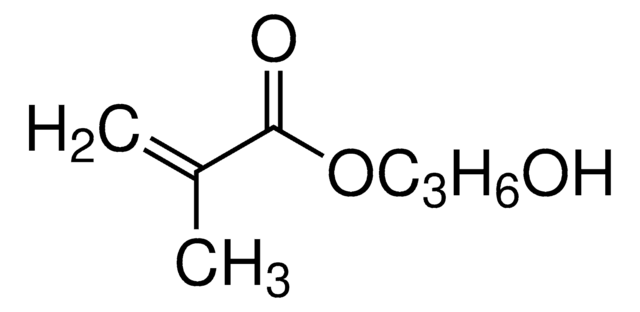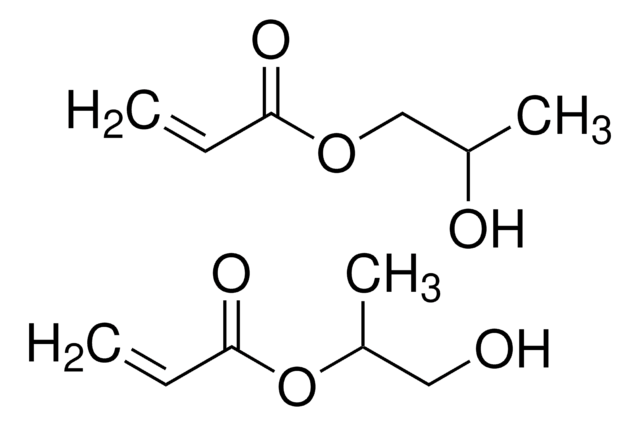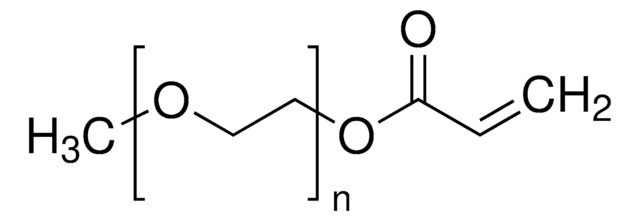292818
2-Hydroxyethyl acrylate
96%, contains 200-650 ppm monomethyl ether hydroquinone as inhibitor
Sinonimo/i:
Ethylene glycol monoacrylate
About This Item
Prodotti consigliati
Densità del vapore
>1 (vs air)
Livello qualitativo
Tensione di vapore
<0.1 mmHg ( 20 °C)
Saggio
96%
Stato
solid
contiene
200-650 ppm monomethyl ether hydroquinone as inhibitor
Indice di rifrazione
n20/D 1.45 (lit.)
P. ebollizione
90-92 °C/12 mmHg (lit.)
Densità
1.011 g/mL at 25 °C (lit.)
Temperatura di conservazione
2-8°C
Stringa SMILE
OCCOC(=O)C=C
InChI
1S/C5H8O3/c1-2-5(7)8-4-3-6/h2,6H,1,3-4H2
OMIGHNLMNHATMP-UHFFFAOYSA-N
Cerchi prodotti simili? Visita Guida al confronto tra prodotti
Categorie correlate
Descrizione generale
Applicazioni
Avvertenze
Danger
Indicazioni di pericolo
Consigli di prudenza
Classi di pericolo
Acute Tox. 3 Dermal - Acute Tox. 4 Oral - Aquatic Acute 1 - Aquatic Chronic 3 - Eye Dam. 1 - Skin Corr. 1B - Skin Sens. 1
Codice della classe di stoccaggio
6.1A - Combustible acute toxic Cat. 1 and 2 / very toxic hazardous materials
Classe di pericolosità dell'acqua (WGK)
WGK 3
Punto d’infiammabilità (°F)
213.8 °F - closed cup
Punto d’infiammabilità (°C)
101 °C - closed cup
Dispositivi di protezione individuale
Faceshields, Gloves, Goggles, type ABEK (EN14387) respirator filter
Scegli una delle versioni più recenti:
Possiedi già questo prodotto?
I documenti relativi ai prodotti acquistati recentemente sono disponibili nell’Archivio dei documenti.
I clienti hanno visto anche
Articoli
The manufacture of monomers for use in ophthalmic applications is driven by the need for higher purity, improved reliability of manufacturing supply, but ultimately by the need for the increased comfort, convenience, and safety of contact lens wearers. Daily wear contact lenses have the potential to fill this need for many customers; however, their widespread use is constrained by higher costs compared to weekly- or monthly-based lenses. New approaches that improve cost structure and result in higher quality raw materials are needed to help make contact lenses more affordable and accelerate growth of the contact lens market.
Global Trade Item Number
| SKU | GTIN |
|---|---|
| 292818-18L | 4061826594704 |
| 292818-1L | 4061826594711 |
| 292818-250ML | 4061826594728 |
| 292818-5ML |
Il team dei nostri ricercatori vanta grande esperienza in tutte le aree della ricerca quali Life Science, scienza dei materiali, sintesi chimica, cromatografia, discipline analitiche, ecc..
Contatta l'Assistenza Tecnica.

















